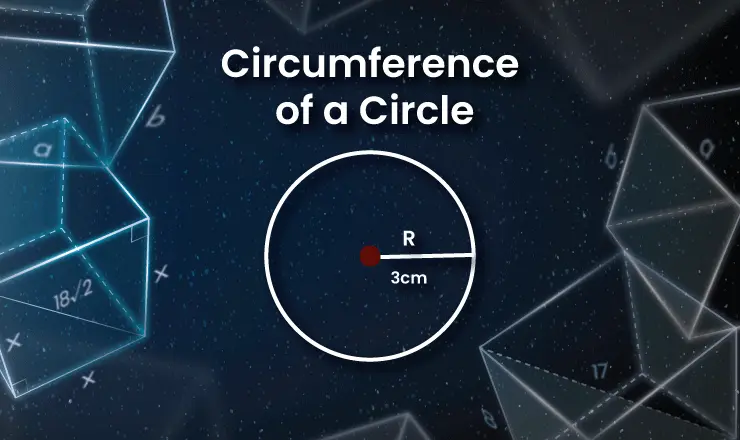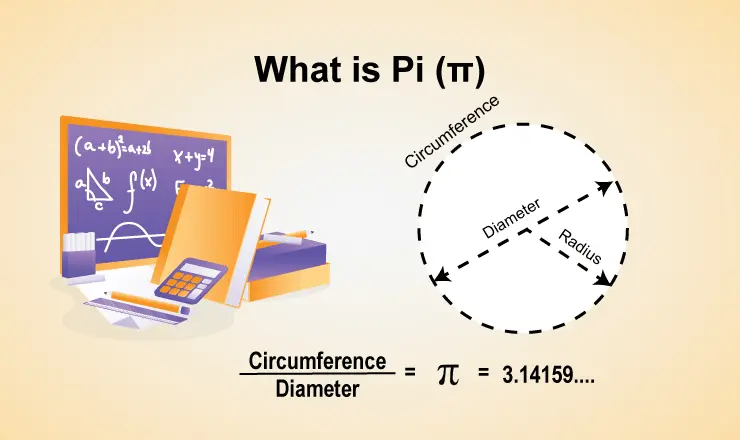The route or boundary that encircles any shape in mathematics is defined by the shape’s circumference. In other terms, the circumference is also known as the perimeter, which aids in determining how long a shape’s outline is. As we all know, a circle’s size and perimeter are its two most crucial characteristics. We will examine the “Circumference of a circle” or “Perimeter of a circle” in this article, along with its definition, formula, and techniques for calculating the circumference of a circle, as well as several instances with solutions.
How to find circumference of circle? To calculate the circumference, multiply the circle’s diameter with pi (π). Or you can simply multiply 2xRadius with pi (π=3.14).
What is the Circumference of a Circle?

The linear distance around a circle is the circumference of the circle. Or in other words, if we cut open a circle to form a linear line the distance from one end to another end is the circumference of the circle.
The Circumference of Circle or other curved geometric object refers to its length. It is the boundary across any two-dimensional circular surface measured linearly in one dimension. It utilizes the same methodology used to calculate the perimeter of any polygon. which is why figuring out a circle’s circumference is also known as finding its perimeter.
A circle is described as a form whose points are all equally spaced out from one another at its center. The center of a circle shown below is at point A.
Pi has a value of about 3.1415926535897. and we refer to this number by the Greek letter (pronounce Pi). It is a non-terminating value.
What is Pi (π)?

It is a greek letter for P or π. It is a mathematical constant, the ratio of a circle’s circumference to its diameter. Regardless of the circle’s size, the balance will always be equal to pi. The value of pi (π) has an accurate value of up to two decimal fractions of 3.14.
Circumference of a Circle formula

How do you find the circumference of the circle? If you are aware of the diameter, use the formula for the circumference of a circle is C = d to determine the circumference. In this expression, “C” stands for the circle’s circumference and “d” for its diameter. In other words, you can calculate a circle’s circumference by simply multiplying its diameter by pi.
What is a Circle’s Precise Circumference?
What is the circle’s precise diameter? A circle’s circumference is equivalent to pi multiplied by its diameter. A pi is an irrational number that is about 3.14. Its unique characteristic is that it represents the relationship between each circle’s circumference and diameter. The circumference of circle formula is C=d, and since d=37, we know that C=37.
The area of any circle is the area that it covers or the area that it encloses. The formula to determine a circle’s surface area is;
A = πr2
This formula for circumference of a circle is applicable to all circles with varying radii, where r is the circle’s radius.
Semi-Outer Circle’s Radius
The semi-circle is generated when we divide the circle into two equal pieces. As a result, the semicircle’s circumference also divides in half.
Consequently, Perimeter = r + 2r
Semi-Circle Area
The region a semi-circle occupies in a 2D plane is known as the area of the semi-circle. Half of the area of a circle with equal radii is represented by the area of the semicircle. Area, therefore, equals r2/2.
Dimensions of a Circle
The radius of a circle is the separation between its center and outer line. The formulas used to calculate the circle’s area and circumference are based on this, which is the most significant quantity of the circle. when we take the value of radius two times, it becomes diameter. The circle is divided into two equal sections by diameter, which is known as a semicircle.
You May Also Like:
How To Calculate Percentage? – 3 ways to calculate percentage
Area of a Triangle Formula – How to find the Area of a Triangle?